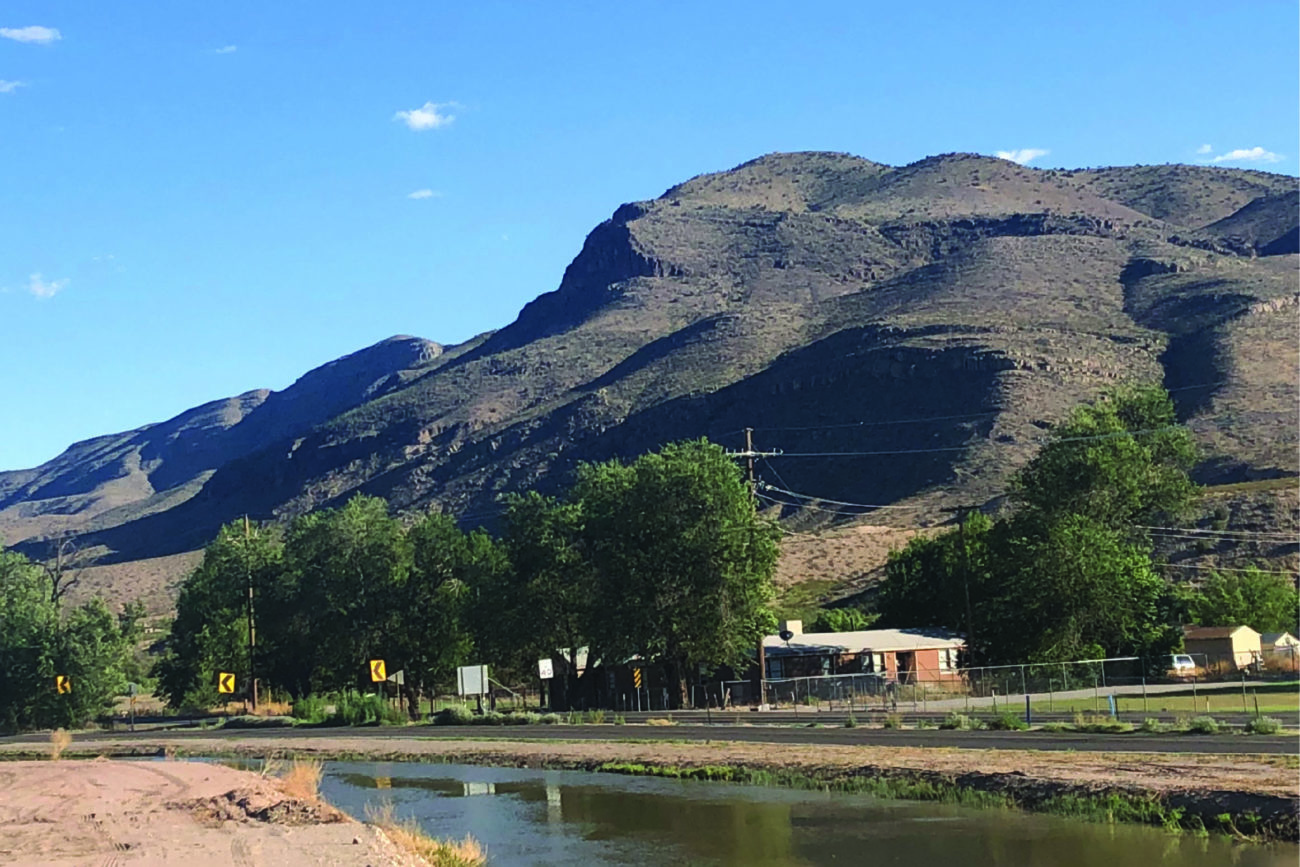Q&A: Lower Rio Grande, New Mexico
An interview with report editor Ane González Lara.

An interview with report editor Ane González Lara.
Read the report Diverse Peoples, Arid Landscapes, and the Built Environment on the Lower Rio Grande region of New Mexico.
When designers are asked to think about a community, the charge they are given is often focused on thinking about what new physical infrastructure or development is needed, or how specific buildings or spaces could be used. Based on your experience reporting on the Lower Rio Grande region of New Mexico, what do you think the usefulness or limitations are of using the lens of the built environment to think about overall community health and needs?
Using this approach inevitably surfaces the entanglements that the built environment has with issues beyond physical infrastructure or building development. Historically, our profession has overlooked or not been an active participant in the decision making processes that deal with communities’ and people’s needs.
When working on the report, some community members were surprised to learn that I was an architect and that this report was supported by an architectural organization. They couldn’t understand why an architect would be working on a report that dealt with topics such as health or work and economy. I believe that each and every one of us in the profession must change this perception.
Personally, I try to contribute to this shift through my role as an educator and through collaborating with organizations and professionals outside our field. The report aims to showcase the connection of the built environment with immaterial issues such as health, time, trauma, and identity. The physical presence of New Mexican landscapes and settlements is what many encounter when visiting southern New Mexico for the first time. However, it is the combination of immaterial realities with material ones that make this region a fascinating place to investigate.
What is the role of design—or of designers—in identifying and addressing the challenges of a community? What are its limits and opportunities? What is scalable? What needs collaboration?
Collaboration through the entire process is key to create projects that address the specific conditions of a community. Seeing community members as part of your team of collaborators and including them in the early stages of the project often make this process more successful. This comic by the Center for Urban Pedagogy shows what collaboration with communities, and the lack thereof, can accomplish.
A couple of years ago, I co-wrote an article with Frank Ball that discusses tools and opportunities architects can use to engage community members in a design process. Partnering up with organizations that are already working with the community and that the community trusts is a successful way to identify challenges and opportunities.
Even if you have good intentions, the idea of designers parachuting into a community to ask questions can be more disruptive than enriching. Also, because a technique worked in one location, doesn’t mean that the same approach will be successful in a different context. Therefore, I don’t necessarily think of these tools as scalable, but adaptable to each situation.
If you could set the agenda, what needs to happen next to make the Lower Rio Grande region of New Mexico flourish in the years to come?
As evidenced in the report, there is incredible potential, intelligence, and energy in the Lower Rio Grande region of New Mexico. Lack of funding is usually the most significant impediment for ideas and projects to flourish in the region. The report outlines some of the most urgent issues that the region is already facing, such as the consequences of a hotter climate and the historical trauma, loss, and harm caused by settler colonialism. With the necessary funding and political support, New Mexico would be able to face these challenges more successfully in the upcoming years.
As an editor, what did you learn about doing this type of work? How can you give voice to a community? What might design professionals learn from this project about working in communities not their own?
I am fascinated and humbled by the admiration, care, and respect that the contributors have for their land and its human and non-human inhabitants. This project has made me learn so much not only about New Mexico but also about humbleness and generosity. The contributors, who wholeheartedly participated in this report, allow a broader audience to see the region through their eyes. I have also learned a lot about collaboration, commitment, and adaptability from The Architectural League. Their incredible patience and support during the entire process are also a key essence of the work.
As an editor, it was clear to me from the very beginning that my primary role in this project was to amplify the community’s voices in order for others to join forces with the groups featured in the report or support their ongoing projects. I find it a bit problematic to think that this report has given the community a voice or empowered them in any way. The community members that are featured in the report already had a strong voice; they advocate for their communities and are active participants in the decision-making processes for their lands.
The report maybe falls short in describing my existing connections with the contributors and the land, and I hope that it doesn’t give designers the impression that one can do this work without knowing the community. At least, I don’t know how I would have done it without it, especially given that we had to work on the report during the global COVID-19 pandemic. If anything, I would underscore that respect, trust, and humbleness have been key in the making of this report
The views expressed here are those of the authors only and do not reflect the position of The Architectural League of New York.
